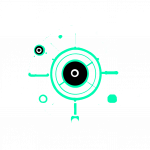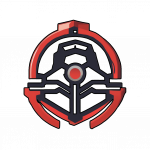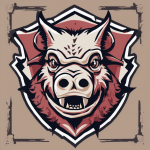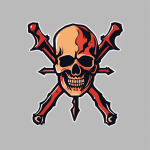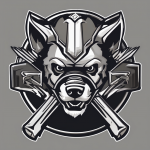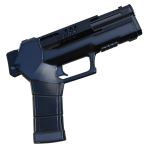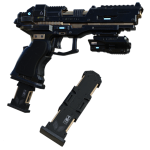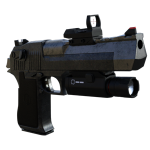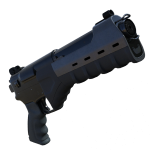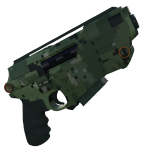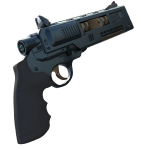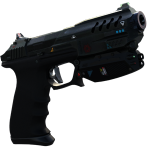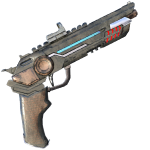Index
Corporations:
The World:
Overview
- The world is set in the year 2066 in a bleak, post-apocalyptic future ravaged by corporate greed, climate change, and global conflict. Powerful megacorporations have supplanted national governments as the dominant forces, ruling over sprawling cyberpunk megacities populated by billions. Outside the corporate-controlled metropolises lie the desolate wastelands of the old world, home to survivors, mutants, raiders, and others who reject or have been cast out from corporate authority. Travel is primarily by train or off-road vehicles, as the world's infrastructure has crumbled. Earthquakes frequently shake the planet, opening up massive craters. Bounty hunters thrive in the lawless frontier. It is a dystopian future where traditional morality has eroded and everyone acts in varying shades of grey.
-
The Corporate Ascendancy
2020: The world is gripped by multiple crises - climate change, economic instability, and geopolitical tensions. Amidst the chaos, a few visionary corporations begin to expand their power and influence.
2022: Greenwitch Industries, a biker gang led by the charismatic John Greenwitch, transforms into a corporation dedicated to stopping the unchecked growth of other companies. They use their knowledge of the streets and combat experience to sabotage corporate operations.
2025: Nexus Dynamics, a pioneering robotics and AI firm, makes groundbreaking advancements in autonomous drones and vehicles. They quickly dominate the market for industrial and military automation.
2027: The Promethean Institute, a shadowy think tank, begins to influence global policy from behind the scenes. They advocate for deregulation and corporate sovereignty.
2029: Chimera Biotech achieves a breakthrough in genetic engineering, creating the first viable human-animal hybrids. Despite ethical concerns, there is massive demand for their "enhanced" creatures and gene-therapies. -
The Corporate Wars
2031: Open conflict erupts between the megacorporations and nations that oppose them. Orbital strikes, autonomous drone swarms, and cyberwarfare become the norm.
2033: Greenwitch Industries sabotages a major oil pipeline controlled by Titan Petrochemical. In retaliation, Titan backs rival gangs to undermine Greenwitch's territory. The Corporate Wars turn hot.
2035: John Greenwitch's daughter Sarah is diagnosed with a terminal illness. Desperate, Greenwitch begins experimenting with illegal cybernetics and gene-mods to save her life.
2037: Governmentsbegin to collapse under the strain of the Corporate Wars. In a surprise move, Nexus Dynamics seizes control of Singapore, establishing the first corporate city-state.
2038: Sarah Greenwitch is saved by an experimental treatment involving a mysterious blue substance. She gains superhuman abilities, but becomes a target for other corporations seeking to exploit her gifts.
2040: The Corporate Wars end with the megacorporations as the uncontested rulers of the world. The Promethean Institute emerges from the shadows, revealing itself as a consortium of the most powerful corporate interests. -
Consolidation of Power
2042: The megacorporations divide the world into corporate fiefdoms. They ruthlessly exploit resources and populations in the war-ravaged regions. Resistance is met with brutal force.
2044: Atlas Security, a private military company, establishes control over Northern Europe. They offer protection to the wealthy elites, while the masses suffer under their boot.
2046: 12-year-old Sarah Greenwitch is kidnapped by corporate forces. John Greenwitch wages a one-man war to get her back, but is unable to locate her.
2048: Blackstone Dynamics, an aerospace and deep space mining company, successfully launches the first manned mission to Mars. They begin construction of an orbital shipyard and mining bases.
2049: Faith, a new religion preaching the divinity of technology, begins to spread in the corporate enclaves. Some whisper that the movement is a front for an unknown entity. -
Rise of the Resistance
2052: The first megacity, New Babylon, is completed by the Promethean Institute. It is a marvel of arcology and sustainable living - but only for the chosen few. The rest are cast out into the wastelands.
2055: After years of tireless searching and fighting, John Greenwitch finally locates his daughter in a secret Chimera Biotech lab. In a daring raid, he frees her, but is mortally wounded in the process.
2057: Sarah Greenwitch, now going by the alias "Little Punch," becomes a notorious bounty hunter and freedom fighter. Her crusade against the megacorps inspires other wasteland dwellers to resist.
2059: Greenwitch Industries is overtaken by a hostile board and rebranded as Blackheart Inc., focusing solely on weapons manufacturing. -
A World Divided
2062: The wastelands have become a no-man's-land, with corp sec, outlaws, and rogue machines fighting a never-ending shadow war. Organized resistance groups begin to form, united by the legend of Little Punch.
2064: At the age of 20, Little Punch is the most wanted individual in the world, with a bounty that could buy a small country. She is rumored to have a hidden sanctuary somewhere in the wastes, a rallying point for the resistance.
2066: The world is divided between the glittering corporate megacities and the lawless wastelands. The 12 megacorporations, including Blackheart Inc., Nexus Dynamics, Chimera Biotech, and the rest, maintain an uneasy peace, ever watchful for signs of dissent. In the wastes, the resistance grows, waiting for the right moment to strike. The stage is set for a reckoning, and Little Punch is at the center of it all, a wild card that could tip the balance. The fate of the world hangs in the balance as old battles reignite and new heroes rise from the ashes of the old world.
Blackheart Inc. (formerly Greenwitch Industries) |
|
Nexus Dynamics |
|
Chimera Biotech |
|
Atlas Security |
|
Promethean Institute |
|
Blackstone Dynamics |
|
Titan Petrochemical |
|
Aegis Cybersystems |
|
Helios Energy Consortium |
|
Zephyr Agritech |
|
Chronos Life Sciences[/h2] |
|
Neon Dreams Entertainment |
|
The Wasteland
The wastelands, the vast expanses of land that lie beyond the glittering corporate enclaves, are a harsh and unforgiving place. Here, the remnants of the old world struggle to survive in the ruins of what once was. The wastelands are a patchwork of different communities, each with its own unique culture, challenges, and ways of life.
Free Cities
The Free Cities are the largest and most prosperous of the wasteland settlements. These are the places that have managed to carve out a measure of stability and autonomy in the midst of the chaos.Junktown | Junktown is a sprawling metropolis built entirely from the debris of the old world. It's a ramshackle city of scrap metal and salvaged materials, where everything from the buildings to the furniture is made from repurposed junk. Despite its rough appearance, Junktown is a thriving community and a major hub for trade in the wastelands. Junktown is known as a haven for mercenaries and bounty hunters. The city's numerous bounty offices and mercenary guilds offer a steady stream of work for those with the skills and the guts to take on dangerous jobs. Junktown is also home to a thriving black market, where one can find anything from rare pre-war tech to outlawed cybernetic enhancements. |
Plane-61 | Plane-61 is a unique settlement built inside and around the wreckage of a massive pre-war transport plane. The plane, which crash-landed in the wastelands during the Corporate Wars, has been converted into a bustling outpost and trading hub. The interior of the plane has been transformed into a maze of shops, living quarters, and communal spaces. The wings and fuselage are dotted with additional structures, creating a sprawling compound. Plane-61 is a neutral ground where wasteland denizens of all stripes come to trade, share information, and hire guides and scavengers for expeditions into the surrounding wastes. |
New Tombstone | New Tombstone is a frontier town that embodies the lawlessness and the ruthless justice of the wastelands. The town is governed by a citizen tribunal, a group of elected officials who serve as judge, jury, and often, executioner. Justice in New Tombstone is swift and brutal. Crimes are punished harshly, with capital punishment being common for offenses as minor as theft. This harsh system has made New Tombstone a relatively safe place, but it has also fostered a culture of fear and paranoia. Despite this, New Tombstone is a popular stop for wasteland travelers, known for its well-stocked saloons and its infamous "Hanging Tree," where the bodies of the condemned are left as a warning to others. |
Company Towns
Company towns are small settlements that have sprung up around corporate outposts and factories in the wastelands. These are places where the corporations exploit local resources and labor, often with little regard for the wellbeing of the inhabitants.- Revenant Gulch Mining Colony
-
Revenant Gulch is a mining colony operated by Blackheart Inc. The settlement is built around a series of deep strip mines, where prisoners and debtors toil in harsh conditions to extract valuable ores and minerals.
The colony is heavily fortified and guarded by Blackheart's private security forces, to protect against raids by wasteland marauders and to prevent the escape of the penal laborers. Conditions in Revenant Gulch are brutal, with little regard for worker safety. Accidents and cave-ins are common, and those who can no longer work are simply discarded. - Zhu Que Geothermal Plant
-
The Zhu Que Geothermal Plant is a facility operated by Helios Energy, harnessing the geothermal activity in the unstable regions of the wastelands. The plant is a major source of power for Helios' operations, but it is also known for the harsh working conditions.
Workers at the Zhu Que plant toil in sweltering heat, exposed to toxic fumes and the constant threat of explosive steam vents. Many of the workers are in debt to Helios, forced to work off their obligations in the dangerous plant. Despite numerous accidents and worker deaths, Helios continues to operate the plant at full capacity, prioritizing profits over safety.
Bandit Kingdoms
In the lawless expanse of the wastelands, bandit kingdoms have risen from the ashes of the old world. These are territories controlled by ruthless warlords and raider clans, who rule through fear and violence.The Razorback Clan | Deathstalkers | Crimson Ji |
| The Razorback Clan is a notorious biker gang that roams the sun-bleached highways of the wastelands. Led by the ruthless matriarch Hannah "The Axe," the Razorbacks are known for their savagery and their distinctive spike-covered armor made from the bones of their victims. The Razorbacks claim no territory, instead roaming the wastes on their heavily modified bikes, raiding settlements and travellers for supplies and sport. They are feared across the wastelands for their brutality and their seeming invincibility, with tales of The Axe's prowess in battle being legendary. | The Deathstalkers are a psychotic band of raiders obsessed with pre-war iconography and memorabilia. They operate out of a stronghold known as The Alamo, a former historical site that they have transformed into a nightmarish compound. The Deathstalkers are known for their grisly rituals, in which they mutilate and sacrifice their victims to their twisted gods. They often adorn themselves with pre-war symbols and slogans, taken from old advertisements and propaganda, which they believe hold mystical power. The sight of their blood-splattered, neon-lit war rigs is enough to strike fear into the hearts of even the bravest wasteland denizens. | The Crimson Ji is a radical fringe movement dedicated to overthrowing the corporate overlords and establishing a new world order in the wastelands. They are a secretive and highly organized group, with cells operating throughout the wastes. The Crimson Ji employs asymmetric warfare tactics, striking at corporate interests with sabotage, assassinations, and terror attacks. They are also known to raid corporate supply lines, redistributing the stolen goods to wasteland communities in need. While some in the wastelands see them as heroic freedom fighters, the corporations have branded them as dangerous terrorists. |
Neutral Settlements
Scattered throughout the wastelands are small, neutral settlements - places where weary travellers can find a moment's respite from the constant dangers of the wastes.Wellspring Oasis
Weapons
Wellspring Oasis is known for its innovative water-based weapons, developed by inventive gunsmiths to take advantage of the town's abundant water resources.- Hydro-Jet Pistol: A sleek, chrome-plated handgun that fires high-pressure jets of water, capable of cutting through flesh and light armor. Popular among the town's security forces.
- Aqua-Pulse Rifle: An advanced rifle that fires pulsed bursts of superheated steam, causing severe burns and concussive damage. Favored by wealthy caravan guards.
- Mist-Screen Grenade: A non-lethal grenade that creates a dense cloud of mist, providing cover and disorienting opponents. Often used by the town's peacekeepers to break up fights.
Armor
In Wellspring Oasis, armor tends to prioritize protection from the harsh desert environment as much as from weapons fire.- Hydro-Weave Suit: A lightweight, breathable bodysuit woven from advanced moisture-wicking fibers. Keeps the wearer cool and hydrated even in the scorching wasteland sun.
- Sandstorm Cloak: A long, hooded cloak made from a special sand-resistant fabric. Protects the wearer from the abrasive sandstorms that frequently sweep through the area.
- Oasis Guard Armor: The distinctive blue-and-white armor worn by the town's security forces. Features a built-in water recycling system that keeps the wearer hydrated during long patrols.
Unique Features
- The Water Markets: Wellspring Oasis' most famous feature, these sprawling open-air markets are where water traders from across the wastelands come to buy and sell. The markets are a colorful, chaotic bustle of activity, with merchants haggling over prices and wasteland denizens of all stripes mingling in the crowds.
- The Springs: The natural springs that give the town its name are not only a vital resource, but also a place of beauty and tranquility. Many of the springs have been turned into public bathhouses and pools, where wasteland travelers can wash off the grime of the wastes and relax in the cool, clear water.
- The Water Gardens: A series of lush, terraced gardens fed by the town's spring water. The Gardens are a popular spot for meetings and negotiations, with the soothing sound of running water and the shade of exotic plants providing a welcome respite from the harsh wastelands.
Fort Hope
Weapons
As a former pacifist commune, Fort Hope has only recently begun to manufacture its own weapons, and its arsenal reflects a preference for non-lethal options and weapons that can serve a dual purpose in agriculture.- Stun-Spore Launcher: A modified agricultural tool that launches capsules filled with a potent bio-engineered spore that quickly incapacitates targets. Used by Fort Hope's defenders to subdue raiders without killing them.
- Sonic Scythe: A high-tech farming implement that uses focused sonic vibrations to cut crops... or enemies. The Scythe's vibrations can stun or disorient targets, making it a effective crowd control tool.
- Photon Lure: Not strictly a weapon, the Photon Lure is a device that emits a pulsing, hypnotic light pattern. Originally used to attract insects away from crops, it has been repurposed as a distraction tool in combat situations.
Armor
Fort Hope's armor prioritizes mobility and utility, reflecting the town's agricultural heritage.- Agri-Suit: A sturdy work suit with integrated padding and reinforced joints. Originally designed for agricultural labor, it provides decent protection against light weapons fire.
- Photosynthetic Cloak: A hi-tech poncho embedded with light-sensitive cells that capture solar energy to power small devices. Provides a trickle charge for electronic equipment in the field.
- Root-Weave Vest: A flexible, lightweight vest made from interwoven, genetically-modified plant fibers. Provides surprising durability for its weight.
Unique Features
- The Hydroponic Farms: Fort Hope's most impressive feature, these vast greenhouse complexes house towering vertical farms that produce a bounty of crops. The farms are a testament to the town's advanced agricultural technology, and a major source of its economic power.
- The Seed Vault: Deep beneath Fort Hope lies the Seed Vault, a secure facility housing an extensive collection of pre-war and genetically-engineered seeds. The Vault is Fort Hope's most closely guarded secret, and the key to its agricultural success.
- The Memorial Wall: A sobering reminder of Fort Hope's history, the Memorial Wall bears the names of all the town's residents who have fallen victim to wasteland violence. The Wall serves as a reminder of the town's pacifist roots, and a rallying point for those who advocate a return to those principles.
- The Council Hall: Once a place for community meetings and public debates, the Council Hall has in recent years become more akin to a war room, where Fort Hope's leaders plan the town's defense and debate the necessity of compromise in the face of growing threats. The changing character of the Hall reflects the town's ongoing internal struggle between its ideals and the harsh realities of the wastelands.
Last edited:








